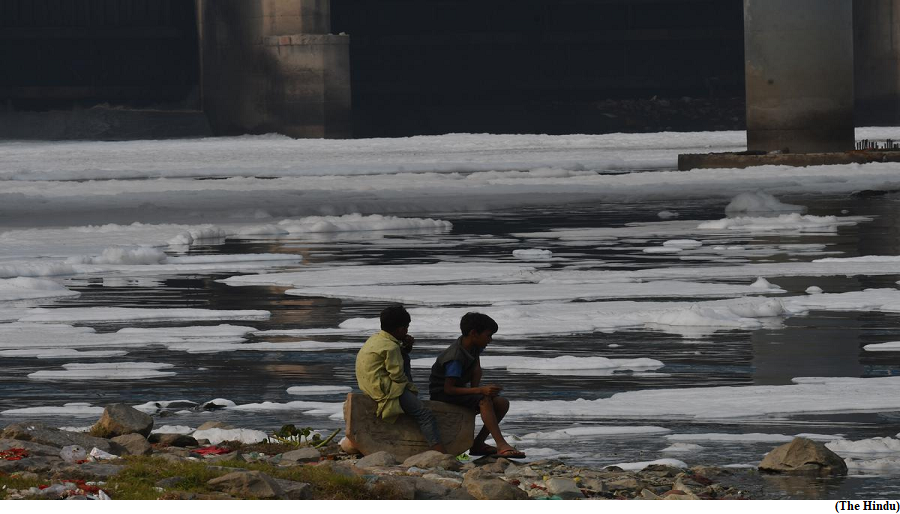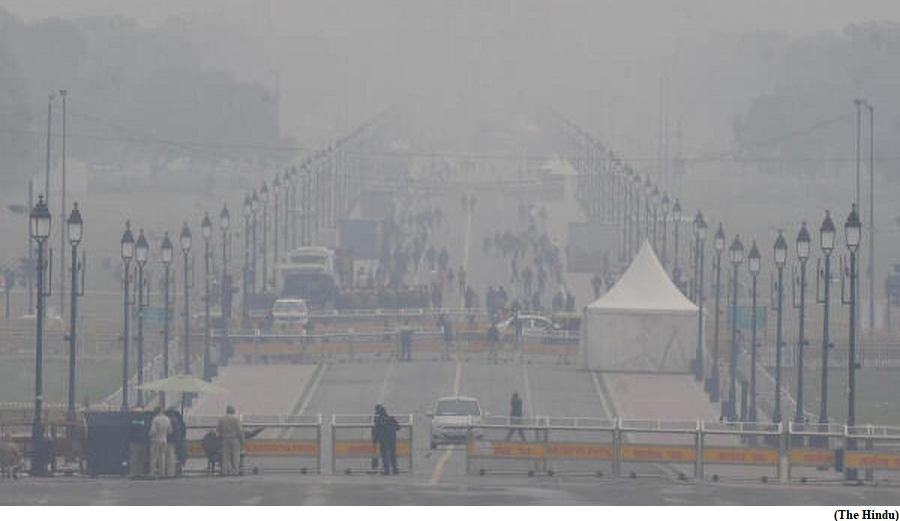What are the changes in the new Water Act? (GS Paper 2, Governance)

Why in news?
- The Lok Sabha recently passed the Water (Prevention and Control of Pollution) Amendment Act, 2024.
- The legislation makes important changes to the Water (Prevention and Control of Pollution) Act, 1974.
What is the Water (Prevention and Control of Pollution) Act, 1974?
- This Act was the first piece of legislation in independent India that identified the need to have an institutional structure to address contamination of water bodies.
- This led to the creation, in September 1974, of the Central Pollution Control Boards (CPCB) and State Pollution Control Boards (SPCB) that were charged with monitoring and preventing public water resources from getting contaminated by sewage and industrial effluents.
- This Act made it mandatory for industrial units to get permission from their respective State boards before setting up factories and submitting themselves to checks on whether their manufacturing and other processes were complying with prescribed norms.
- While the CPCB is empowered to conduct checks and provide guidance on technical standards to be adhered to, the SPCB files cases and is expected to enforce compliance.
- Violating the provisions of the Water Act can mean industries being shut down; monetary fines as well as imprisonment of up to six years. That said, there have been no instances of companies or people in India having been imprisoned due to environmental violations.
What are the amendments?
- Water is a State subject, and the Centre cannot directly pass legislative laws influencing water management. However, the Centre can create legislation, if two or more States demand it, and this can be made applicable by States over their territories if they adopt the legislation in their Assemblies.
- The amended version of the Act, passed by both Houses of Parliament, will currently apply to Himachal Pradesh and Rajasthan and the Union territories.
- The original Act, passed in 1974, is applicable in 25 States. The most important change is that it removes the provisions of imprisonment for several violations, deemed “minor”, and replaces them with fines, to the tune of ₹10,000 extending up to ₹15 lakh.
Key Highlights:
- As per the original Act, the SPCB’s permission is needed for establishing any industry or treatment plant, which could discharge sewage into a water body, sewer, or land. In the amendment, the Bill specifies that the Centre, “... in consultation with the CPCB, may exempt certain categories of industrial plants from obtaining such consent....”
- However, operating or establishing an industrial unit without SPCB consent can still land you in jail for six years along with a fine.
- The Bill also adds that the Centre may issue guidelines for the grant, refusal, or cancellation of consent granted by the SPCB.
- It also penalises tampering with monitoring devices used in determining whether any industry or treatment plant can be set up. The penalty will be between ₹10,000 and ₹15 lakh.
- The amended Act also empowers the Centre to frame rules to select the chairpersons of SPCBs and frame guidelines that States can follow on matters for establishing industries and new operating processes.
What has been the response?
- In discussions on the Act in the Lok Sabha, Members of Opposition parties raised concerns that the amendments weakened the laws that protected rivers and water bodies from industrial pollution.
- They argued that the fear of imprisonment acted as an effective deterrent to industrial units that were lax with complying with strict regulations.
Transitioning to hyperlocal extreme weather forecasting
(GS Paper 1, Geography)
Context:
- The Department of Agriculture & Farmers Welfare and the Ministry of Agriculture & Farmers Welfare have initiated the weather information network and data system (WINDS) to generate long-term, hyperlocal weather data.

Background:
- In India, the Indian Meteorology Department (IMD) is the principal government agency in all matters relating to meteorology and it specialises in the incredibly complex science of predicting weather patterns by observing, modelling and interpreting a multitude of variables.
- However, in tropical countries like India, weather variability is inherently higher. IMD’s forecasts have improved vastly in the last few years as it has upgraded to technologies similar to the ones used by the U.S., the U.K. and Japan, which are known to produce accurate forecasts.
- Yet, there are still many days and geographies for which Indian forecasts go wrong, especially during winter and summer monsoon.
Gaps:
Lack of weather monitoring ground stations:
- One of the major hurdles is the lack of weather monitoring ground stations. Currently, IMD operates around 800 automatic weather stations (AWS), 1,500 automatic rain gauges (ARG) and 37 doppler weather radars (DWR).
- This is against the total requirements of more than 3,00,000 ground stations (AWS/ARG) and around 70 DWRs.
- Several Indian State governments and private companies operate a significant network of ground stations (more than 20,000), many of which are not currently used by IMD. The factors range from the inaccessibility of the data to their reliability.
Lack of new technologies:
- Currently, most of the prediction software used in forecasting are based on the global forecasting system and weather research and forecasting models, both of which are not the most modern.
- In contrast, with the government’s focus on Make in India, its support to start-ups and the huge public and private investments in the sectors of agriculture and climate, many new age companies are switching to artificial intelligence/machine (AI/ML) learning for more predictions.
WINDS:
- A promising step forward is the weather information network and data system (WINDS) to generate long-term, hyper-local weather data.
- The system will also promote the data for wider applications in agriculture and other sectors, it will help in creating a national-level data base, and it will assist in establishing the protocols required to access the country-wide data by the various public and private concerns.
- Under this programme, more than 200,000 ground stations (AWS and ARG) will be installed, which can help in enhancing weather data utilisation and thus in improving weather predictions and decision making.
Air quality monitoring systems:
- Recently, large dense fog blanketed the NCR region, leading to near-zero visibility. This happens mainly because of the high particulate matter and smog in the atmosphere.
- Fog can trap the pollutants close to the ground, leading to an increase in respiratory and other health-related issues.
- Another cause for worry is that in foggy conditions, some pollutants like nitrogen oxides can react with other compounds to form secondary pollutants, thus posing severe health risks, particularly to children and the elderly.
- Air quality monitoring systems are currently very expensive and tend to be imported. Due to the Make in India initiatives, however, many Indian companies have started to manufacture low-cost and highly reliable sensor-based air quality monitoring systems. These are also easy to install and have low maintenance costs.
- Thus, it is now possible to install a large number of such instruments quickly, especially in urban areas. The IITs are helping as well as they have started centres of excellence in this domain, with a mission to establish a nation-wide network of affordable air quality sensors.
- An integrated AI/ML-based model with data from the new air quality and weather sensors will be a major step forward to accurately predict fog as it will help in timely decision making around transportation and the health-related impacts of air pollution.
Way Forward:
- Once seamless data sharing and systems integration is achieved, India will have access to a new information gateway and one that is critical to addressing our climate and environmental challenges.



